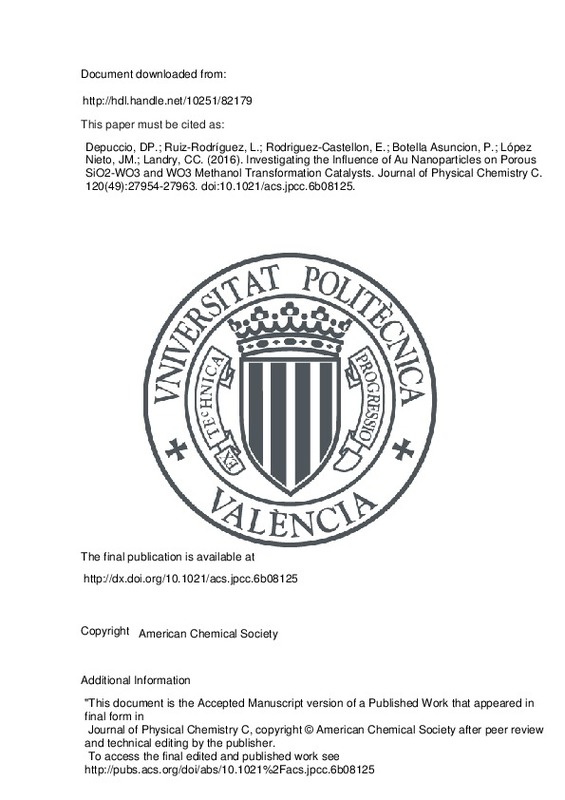JavaScript is disabled for your browser. Some features of this site may not work without it.
Buscar en RiuNet
Listar
Mi cuenta
Estadísticas
Ayuda RiuNet
Admin. UPV
Investigating the Influence of Au Nanoparticles on Porous SiO2-WO3 and WO3 Methanol Transformation Catalysts
Mostrar el registro completo del ítem
Depuccio, DP.; Ruiz-Rodríguez, L.; Rodriguez-Castellon, E.; Botella Asuncion, P.; López Nieto, JM.; Landry, CC. (2016). Investigating the Influence of Au Nanoparticles on Porous SiO2-WO3 and WO3 Methanol Transformation Catalysts. Journal of Physical Chemistry C. 120(49):27954-27963. https://doi.org/10.1021/acs.jpcc.6b08125
Por favor, use este identificador para citar o enlazar este ítem: http://hdl.handle.net/10251/82179
Ficheros en el ítem
Metadatos del ítem
| Título: | Investigating the Influence of Au Nanoparticles on Porous SiO2-WO3 and WO3 Methanol Transformation Catalysts | |
| Autor: | DePuccio, Daniel P. Ruiz-Rodríguez, Lidia Rodriguez-Castellon, Enrique Landry, Christopher C. | |
| Entidad UPV: |
|
|
| Fecha difusión: |
|
|
| Resumen: |
Analyzing the structural and chemical properties of materials at the interface of metal nanoparticles and metal oxide supports is important for catalytic applications. Tungsten oxide (WO3) is a widely studied catalyst, but ...[+]
|
|
| Palabras clave: |
|
|
| Derechos de uso: | Reserva de todos los derechos | |
| Fuente: |
|
|
| DOI: |
|
|
| Editorial: |
|
|
| Versión del editor: | http://dx.doi.org/10.1021/acs.jpcc.6b08125 | |
| Código del Proyecto: |
|
|
| Descripción: |
|
|
| Agradecimientos: |
The authors would like to thank the University of Vermont and the DGICYT in Spain (CTQ2015-68951-C3-1-R, CTQ2012-37925-C3-3-R, and SEV-2012-0267 Severo Ochoa Projects) for financial support and David M. Parker for assistance ...[+]
|
|
| Tipo: |
|







![[Cerrado]](/themes/UPV/images/candado.png)


